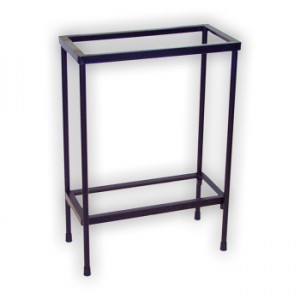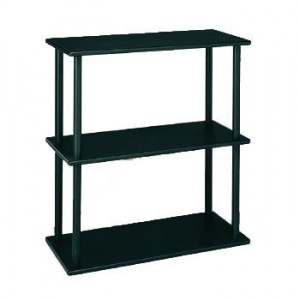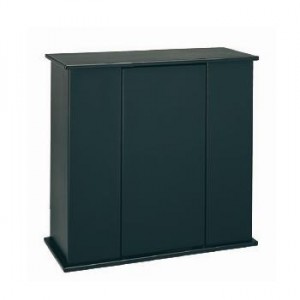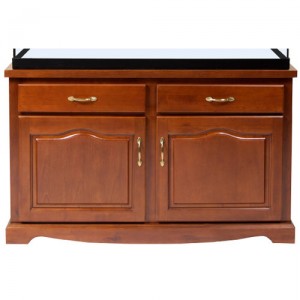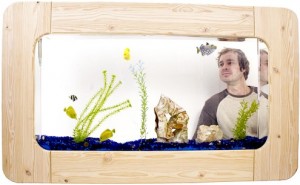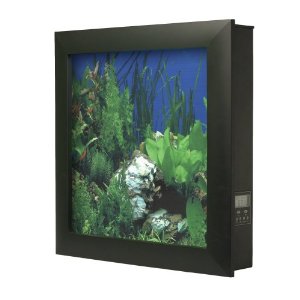My granddaughter came to me yesterday and asked me to get her an aquarium. Before I could make such a promise I wanted to investigate what all was involved in setting up a fish tank.
As part of my investigation I decide that I need to review my knowledge and see what new advances the “experts” could teach me about the care of fish. I took my clip board and set out.
One of my first observations was the change in the sources of tropical fish. Years ago when I was keeping tropical fish there were many places to acquire small pets and fish. There was a time when many variety and dry goods stores, also known as five and dimes, had fish. The small stores have been taken over by today’s larger mini-marts, many of which do not have the personnel to care for live animals.
Today, fish can only be obtained from dedicated pet and pet supply stores. Some of these stores have general pet supplies, and a few specialize in fish and aquaria.
I visited three shops in my local area to get a feel for how knowledgeable the employees are. Two of the stores were general pet supply stores and one emphasized the aquarium. In all the shops the employees were eager to assist me, but of course the employee at the specialty store was much more helpful. The specialty shop not only knew about the fish and the equipment that I would need, she was eager to teach me how to set up a tank so that I would become a successful aquarist. Included in her advice was information about the various fish and how to pick fish that would result in a balanced community tank.
Basic items for a home aquarium:
- Aquarium
- Aquarium Stand
- Hood/Light
- Filter System
- Filter Media
- Aquarium Gravel
- Heater
- Thermometer
- Fish Food
- Supplemental Food
- Bio-Boost
- Gravel Cleaner
- Books
- Salts and water conditioner
Before any fish are purchased there should be some thought as to where the fish tank will be placed. The location of the tank will influence the size of tank to buy. Fish tanks can be purchased in 2.5 gallons to 150 gallons and larger. Even larger tanks can be special ordered or full wall aquaria can be installed but large fish tanks are probably not for beginners.
One important fact to consider when setting up an aquarium is the weight of a tank once it is set up. The water, aquarium gravel, aquarium hood, a filtration system, and all the cords necessary to operate the accessories could add up to a lot of weight. A five gallon tank set up can have a total weight of 45 lbs or more. The home aquarist most often purchases a 55 gallon tank. An estimated weight for a 55 gallon fish tank would be about 500 pounds. Five hundred pounds of glass and water will require a very sturdy stable aquarium stand.
The size of the tank will influence the number of fish you should keep. The usual rule of thumb is one fish per gallon of water. This rule can be stretched in either direction depending on the breed of fish you select, and if you have a large fish tank. The larger the adult fish, the fewer fish per gallon. One of the factors that could have an influence on the number of fish kept in one tank is how frequently the tank will be cleaned. A crowded tank will need to be cleaned and filtered more often to prevent the pH of the water from rising too rapidly.
You can also get fish tanks in shapes other than rectangular. If you want to consider an aquarium of a unique shape be aware of the pros and cons. A multi-sided slender tank can add interest in the final effect of a display and show off the fish in a different way. However, it might complicate the cleaning of the tank as well as add expense for special equipment to set it up and to maintain.
Don’t forget that an electrical outlet should be somewhere near the proposed set up site. Electrical power will be needed to power the filter, heater, and lights. The aquarium hood keeps the tank covered, which helps keep evaporation of the tank water to a minimum, and it also helps protect the fish from jumping out. Some species have a little too much energy for their own good.
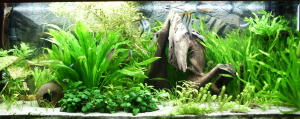
Densely-planted tropical fish tank. View larger image to spot the happy fish!
Without a doubt a filtration system is essential. The filtration can be done by mechanical, chemical or biological methods, or a combination of these systems. Get as much information about each system before purchasing any system. Be sure you know what will be involved in cleaning or replacing the filter media.
Other pieces of equipment that you will need are a heater, a thermometer, and perhaps books for general information. Some additional items you might want to consider are chemicals such as aquarium salt—to help cure and prevent diseases; water conditioner—to remove chlorine from tap water; a bio-boost—to start the nitrogen cycle; and vitamins and minerals—to add to the general health of the fish.
Optional but recommended items
In for a penny, in for a pound. Now that you have gotten this far, here is another list of items to consider having:
- Live Plants
- Background
- Rocks
- Driftwood
- Fish Net
- Algae Scrubber
- Ammonia Test Kit
- Nitrite Test Kit
- Nitrate Test Kit
- pH Test Kit
The plants and decorations add interest and help keep fish healthy, and the testing kits are explained below.
How to set up the aquarium
Even new aquaria and equipment should be well rinsed with warm clean water before it is use. If an aquarium background (See article on aquarium backgrounds) is going to be used, it is easier to be placed on the tank before any water or decorations are added in the tank.
The tank should be placed on a level solid base away from direct sunlight. A sturdy aquarium stand is recommended to hold the weight and help prevent the possibility of a pressure crack. With the tank resting in place, add rinsed aquarium gravel. (If an under gravel filter is used, place it first.)
Start filling the tank with lukewarm water by slowly pouring the water into the tank in such a way that it slides down a side before hitting the bottom of the tank. The purpose of this is to avoid displacing the gravel, and later the aquarium ornaments and filter. When the tank is ½ to 2/3 full, decorations, plants, and possibly the filtration system can be added. The decorations, plants, driftwood, and that sort of thing, adds interest to the look of the tank, but it also provides cover for the fish to hide in. Being able to hide helps the fish be less stressed, and they will live longer.
Continuing to add water with care will eliminate the need of reaching into the tank and repositioning the placements. When the tank is within 2” of the top add aquarium salt and water conditioner. Be sure to consult the package for directions.
Finish hooking up the filtration system. Place the heater and thermometer into the aquarium. (Follow the direction given with the heater.) Continue filling the aquarium with water to 1” of the top. Turn on the filter and heater, let everything cycle for at least 24 hours. Some adjustment to the heater may be necessary to keep the water at the desired temperature for the fish you intent to add. (Tropical fish 76-78 degrees and gold fish 70-72 degrees.)
After the tank has had the proper time to cycle, it is recommended that you test the water for the desired pH level for the fish you want to keep, and make any adjustments as needed. (Some additional information about pH can be found here). It is now, finally, time to add some fish to your tank.
It is recommended, especially for the beginner, to select fish species for their ability to withstand the nitrogen cycle. Some of the recommended fishes are Barbs, Swordtails, Danios, and some Tetras. A knowledgeable pet shop clerk can assist you in making the right selection. The first fish added to the aquarium will help establish a good nitrogen cycle.
Nitrogen Cycle
Nitrogen is the most common element in the atmosphere, and it is essential to all living things. However, most living things cannot get nitrogen out of the air on their own. The organisms that can, mostly bacteria, are called nitrogen-fixing. The cycle starts in your fish tank with the ammonia stage, when the fish give off urine and solid waste into the water. The ammonia would quickly build up in the water to levels that are toxic to fish. Fortunately, we have some helpers in the bacterial world.
Certain bacteria are able to convert the rising ammonia is nitrite, also toxic. But this product is converted with the help of another bacterium into nitrate. Nitrate is in a form that can be used by aquarium plants as a nitrogen food source. So, what the aquarium-keeper must do is to establish this process in the new tank.
Fortunately, the bacteria you need to grow in your tank are everywhere (in the air, water, etc.), but they need time to grow to suitable population levels in your tank to keep the ammonia levels down. This is why it is best to start with a few hardy fish that can tolerate initial rising ammonia levels till the bacteria really kick in. Testing kits can help you determine when this cycle is set up and in balance. Also, you will likely need to change out some of the tank water from time to time as another method of reducing ammonia levels.
This full process should take about 2 or more months, so do not get the most expensive fish right away. You may have some early casualties. With the nitrogen cycle established and the starter fish thriving it is time to add more fish to the tank. The size of the tank will determine the final number of fish. With the final number in mind a mixture if live bearers, schooling fish, catfish and algae eaters can be introduced into the community.
Adding varieties of fish serves more than just adding more fish to the tank. Variety adds to the interest of a tank and each variety can contribute to the health of the tank. As an example the catfish, one for every 5 gallons of water, are bottom feeders and will help consume the food that has fallen to the bottom of the tank. This in turn helps prevent the food from rotting and fouling the waters. The algae eaters, usually one for every 10 gallons, do just as the name implies. They eat algae and helps keep the algae controlled.
A well established aquarium will naturally do a lot to keep itself healthy. It will produce the bacteria that will help keep the nitrogen cycle active. Plants take up the nitrogen and carbon dioxide and give off oxygen. The fish will do their job of eating the bottom foods and eating algae. An aquarist must do his job of providing the final assist, periodic cleaning, and maintenance. But this rewarding hobby will provide you and your family with hours of enjoyment.
Related Posts:
Snails in an aquarium
Breeding fish in a home aquarium
More about egg laying fish
Live bearing fish in a home aquarium
Aquarium background
Crustaceans and larvae as fish food
Diverse food for aquarium fish
Aquarium gravel and water
Experiences in setting up a home aquarium
Aquarium Stands, what are the options and considerations?
Aquarium hoods
[link id=’2333′]
